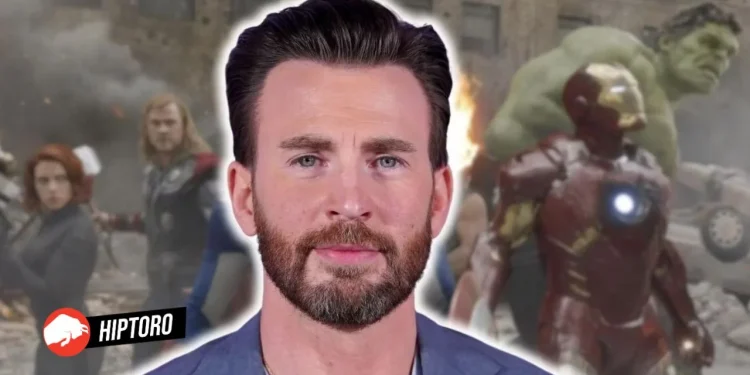Chris Evans, known for his versatility and dynamic performances, has built an impressive filmography that spans various genres, from action-packed blockbusters to intimate dramas. His ability to bring depth and charisma to his roles has not only made him a household name but also a critical darling.
The top 10 movies of Chris Evans showcase his journey from a young actor to a leading man in Hollywood, highlighting his range and the evolution of his career. This collection of films includes his iconic portrayal of Captain America in the Marvel Cinematic Universe, which redefined superhero cinema, as well as his work in smaller, character-driven projects that demonstrate his skill as an actor.
Each film, whether a blockbuster hit or an indie gem, contributes to the tapestry of Evans’ remarkable career, offering audiences a glimpse into the talent and dedication of one of Hollywood’s most beloved stars.
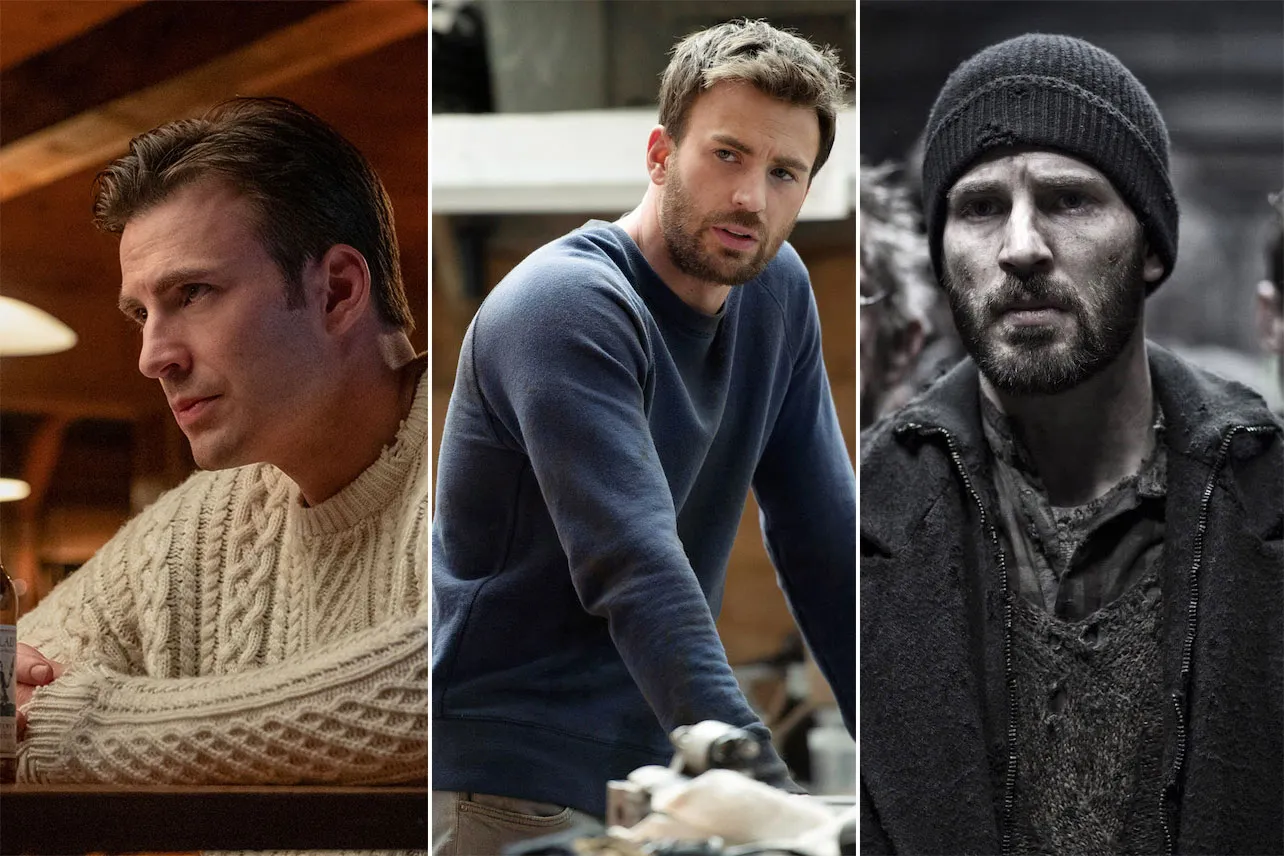
List of the top 10 Chris Evans movies
1. “Avengers: Infinity War” (2018): A Cinematic Marvel
“Avengers: Infinity War,” directed by Anthony and Joe Russo, stands as a monumental achievement in the Marvel Cinematic Universe (MCU). This film, released in 2018, represents not just a critical peak in Chris Evans’ career as Captain America but also a pivotal moment for superhero cinema. It intricately weaves together the narratives of countless characters across the MCU, culminating in a showdown against the formidable antagonist, Thanos, portrayed by Josh Brolin.
The movie’s plot is a masterclass in balance and pacing, expertly juggling a dizzying array of MCU heroes as they strive to thwart Thanos’ quest to obliterate half of all life in the universe with the Infinity Stones. Evans reprises his role as Steve Rogers/Captain America, bringing depth, leadership, and a grounded sense of humanity to a film that could easily have been lost in its own spectacle.
“Avengers: Infinity War” is not just a blockbuster; it’s an emotional rollercoaster that challenges its heroes and audience alike. The film’s ending, marked by its shocking and somber tone, left audiences reeling and set the stage for the epic conclusion in “Avengers: Endgame.” The Russo brothers’ direction is commendable for its ability to maintain a clear narrative throughline amid the complex interweaving of multiple story arcs.
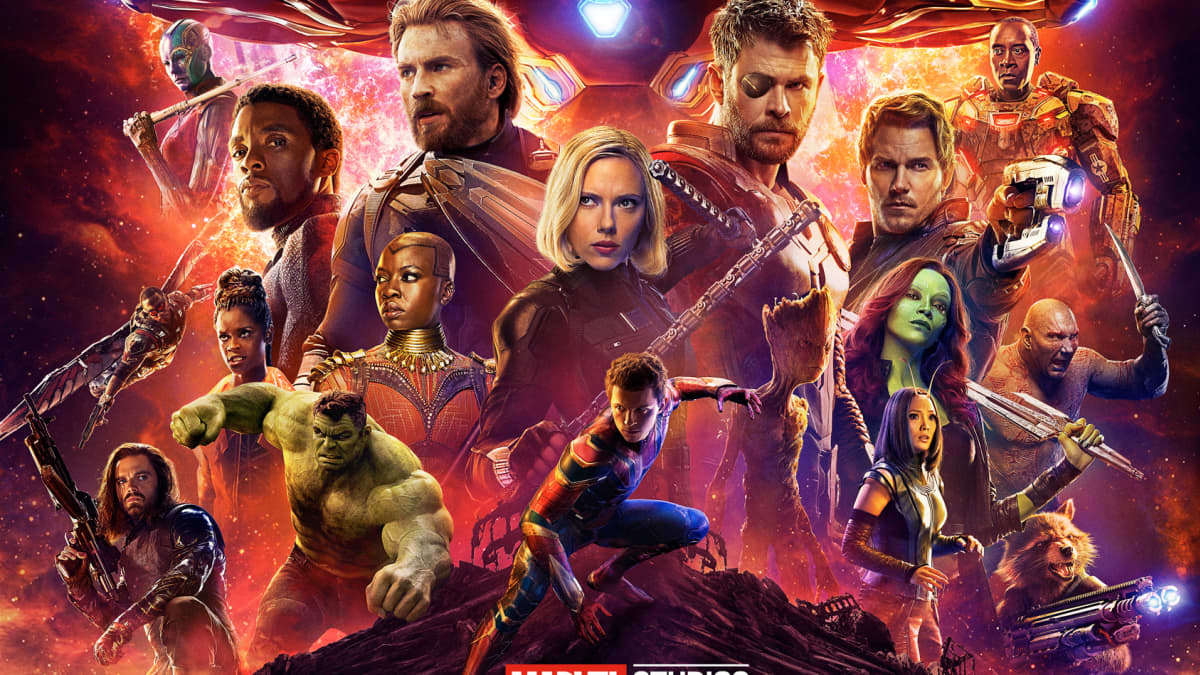
Chris Evans’ portrayal of Captain America shines as he embodies the unwavering moral compass amidst a fractured Avengers team. His performance, along with the ensemble cast’s, elevates the film beyond its genre constraints, offering a story that is both thrilling and deeply human.
From a technical standpoint, “Avengers: Infinity War” impresses with its visual effects, action sequences, and sound design. The film’s ability to blend CGI with live-action seamlessly creates an immersive experience that is both visually captivating and narratively engaging.
The film’s critical and commercial success underscores its impact. With an impressive box office haul and positive reviews from critics and fans alike, it solidified its place in cinema history. Its exploration of themes such as sacrifice, loss, and heroism resonates deeply, making it more than just another superhero movie.
“Avengers: Infinity War” stands as a testament to the power of collaborative storytelling and the culmination of a decade-long journey in the MCU. It highlights Chris Evans’ significant contribution to the franchise and the superhero genre, offering a performance that is both heroic and heartfelt. As part of Evans’ filmography, it represents a pinnacle of achievement, showcasing his evolution as an actor within one of cinema’s most ambitious projects.

In conclusion, “Avengers: Infinity War” is not only a highlight in Chris Evans’ career but also a defining moment for the superhero genre. Its blend of action, emotion, and spectacle sets a new standard for cinematic storytelling, making it a landmark film that will be remembered for years to come.
2. “Scott Pilgrim vs. the World” (2010): A Cult Classic Beyond Its Time
“Scott Pilgrim vs. the World,” directed by Edgar Wright, emerged in 2010 as a film ahead of its time, blending comic book aesthetics with video game culture in a way that was both innovative and visually dazzling.
This adaptation of Bryan Lee O’Malley’s graphic novel series stars Michael Cera as the titular Scott Pilgrim, a bass guitarist battling the seven evil exes of his new love interest, Ramona Flowers (Mary Elizabeth Winstead).
Chris Evans plays one of these exes, Lucas Lee, a narcissistic action movie star and skilled skateboarder, providing a standout performance that adds depth and humor to the film’s unique villain lineup.
The movie’s blend of genres—action, comedy, and romance—set against a backdrop of Toronto’s indie music scene, creates a distinct narrative style characterized by its rapid pace, witty dialogue, and imaginative visuals.
Edgar Wright’s direction is key to the film’s success, utilizing dynamic editing, sound design, and special effects to bring the graphic novel’s pages to life. Each battle between Scott and the evil exes is crafted with a unique flair, making full use of visual effects to mimic the over-the-top action of video games and comic books.
Chris Evans’ role as Lucas Lee is a highlight, showcasing his comedic timing and ability to embody a larger-than-life character. Evans plays Lee with a mix of arrogance and charm, making him a memorable antagonist in Scott’s journey. His performance is a testament to his versatility as an actor, able to shift seamlessly between the roles of hero and villain.
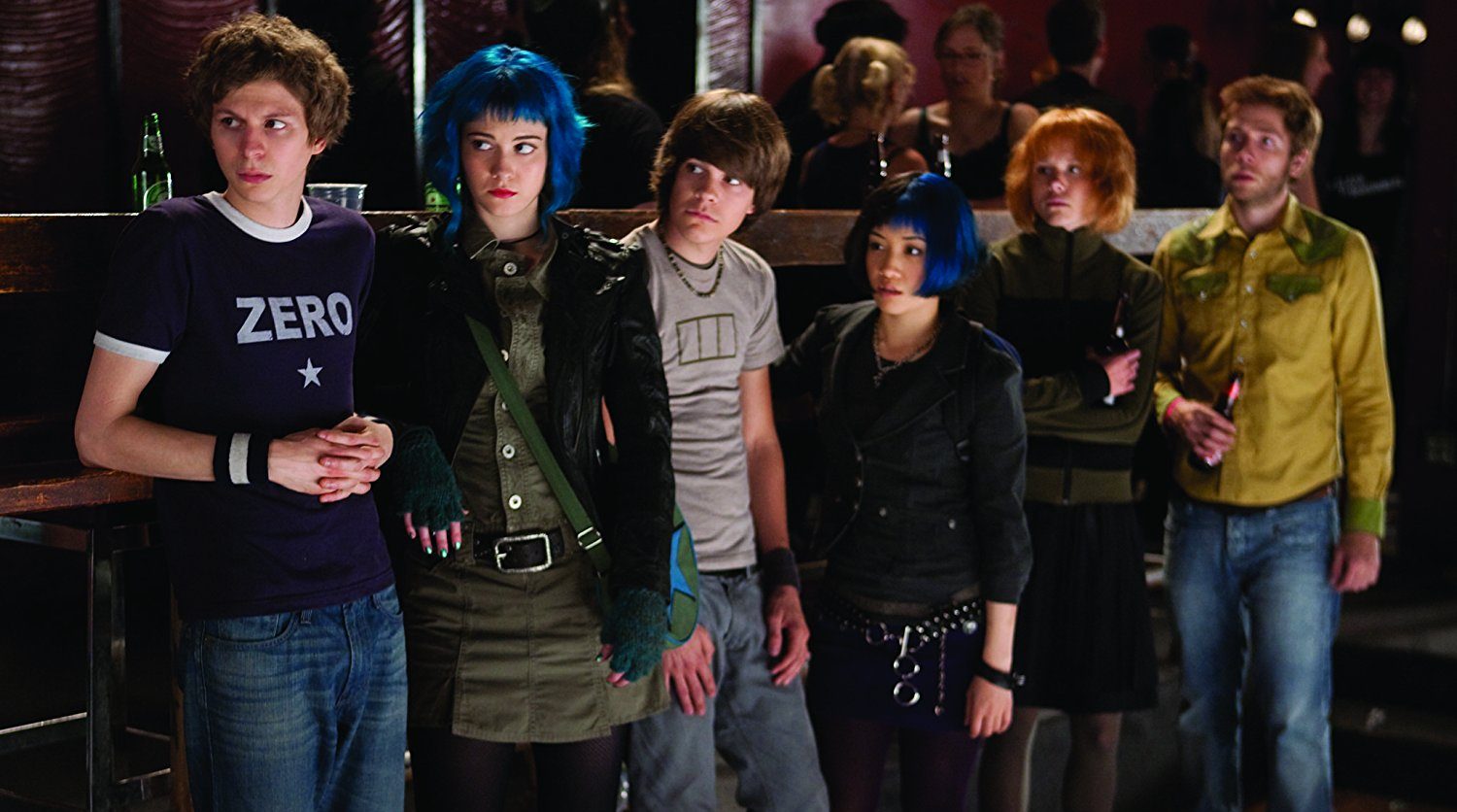
Critically, “Scott Pilgrim vs. the World” received acclaim for its originality, visual style, and faithful adaptation of the source material. However, it struggled at the box office, possibly due to its niche appeal and unconventional narrative structure. Despite this, the film has since gained a dedicated fan base, appreciating its unique place within the comic book and video game adaptation genres.
The film’s soundtrack also deserves mention, featuring original music performed by the characters’ bands and contributing to the immersive world Wright creates. The energetic punk and indie rock tracks complement the film’s visual and narrative style, enhancing the overall experience.
“Scott Pilgrim vs. the World” stands out within Chris Evans’ filmography as a project that allowed him to explore a different type of character and participate in a film that has grown in appreciation over time. Its innovative blend of genres, visual style, and engaging performances, including Evans’, make it a cult classic that continues to find new audiences.

In summary, “Scott Pilgrim vs. the World” is more than a comic book movie; it’s a cinematic experience that celebrates youth culture, love, and the battles we fight for both. Its enduring popularity and impact on its fans underscore its status as a cult classic, offering a blend of humour, action, and heart with a distinct visual style that remains unmatched.
3. “Captain America: The First Avenger” (2011): The Birth of a Hero
“Captain America: The First Avenger,” directed by Joe Johnston, serves as the origin story for one of Marvel’s most iconic characters, Steve Rogers, a frail but courageous man transformed into the super-soldier Captain America to aid the United States during World War II. The film is notable for its period setting, providing a backdrop that combines historical events with the fantastical elements of the Marvel Comics universe.
Chris Evans’ performance as Steve Rogers is the heart of the film. Evans brings sincerity and earnestness to the role, embodying the idealism and moral integrity of the character. His portrayal of Rogers’ transformation from a weak, sickly young man into a symbol of hope and justice is compelling, grounding the superhero narrative in a human story about courage, sacrifice, and the desire to do what’s right.
The film’s visual style pays homage to the era, with rich, sepia-toned cinematography and production design that evoke the 1940s. The special effects used to depict Evans’ pre-transformation physique as frail and small, contrasted with his post-serum muscular build, are particularly impressive, effectively selling the character’s physical transformation.
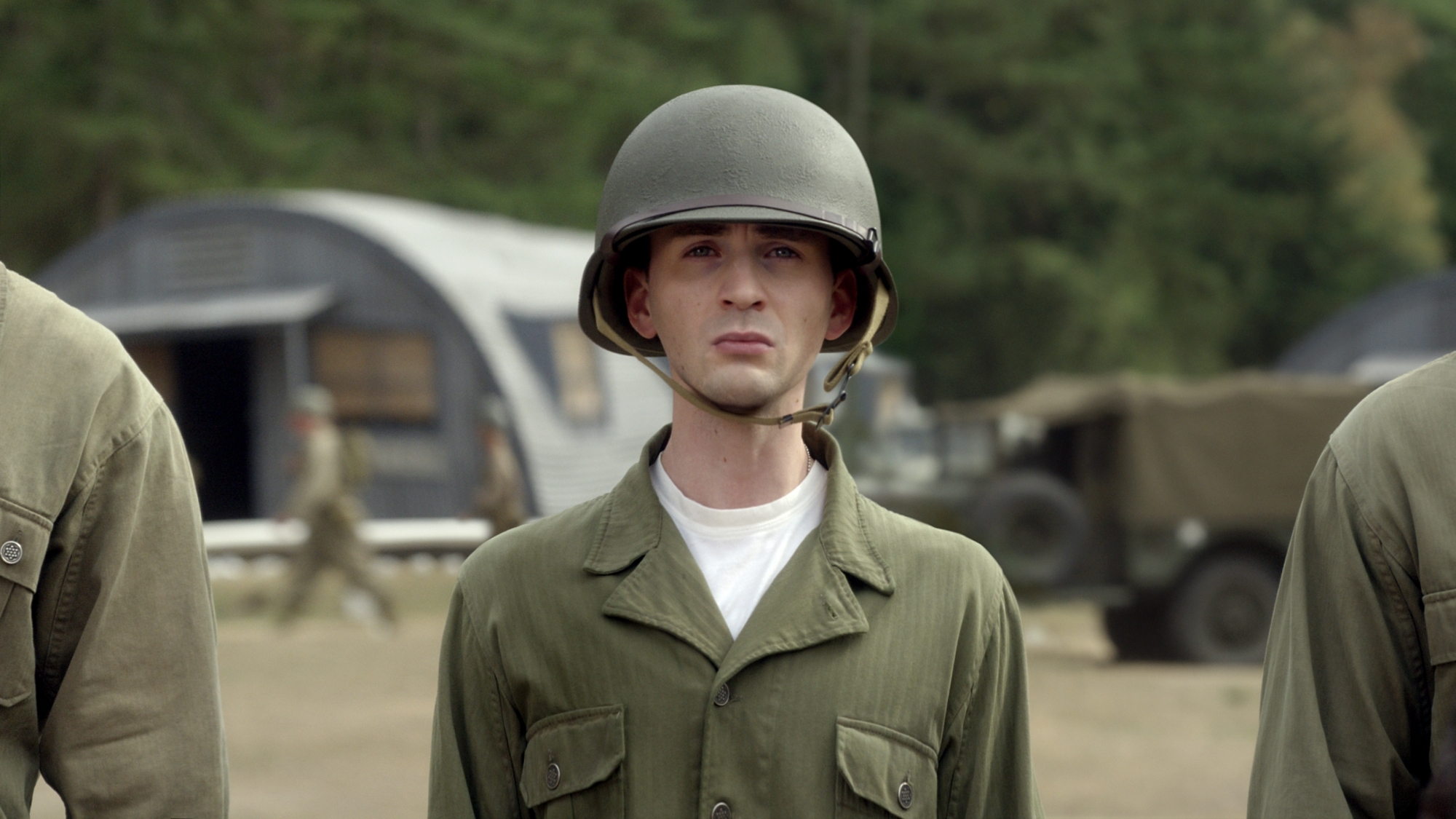
“Captain America: The First Avenger” also introduces audiences to key characters in the Marvel Cinematic Universe (MCU), including Peggy Carter (Hayley Atwell), Bucky Barnes (Sebastian Stan), and the villainous Red Skull (Hugo Weaving). The relationships developed in this film, especially between Rogers and Carter, add emotional depth to the narrative, enriching the overall MCU storyline.
The film’s action sequences are well-executed, blending hand-to-hand combat with period-specific weaponry to create engaging set pieces that highlight Captain America’s abilities. The use of the iconic shield as both a defensive tool and a weapon is creatively portrayed, becoming a signature aspect of the character’s fighting style.
Critically, “Captain America: The First Avenger” was well-received, praised for its direction, Evans’ performance, and its successful integration into the larger tapestry of the MCU. It set the stage for future Captain America films and played a crucial role in building up to “The Avengers.”

“Captain America: The First Avenger” is a defining film in Chris Evans’ career, firmly establishing him as a key figure in the superhero genre. It is remembered not only for its action and adventure but for its portrayal of heroism, integrity, and the enduring power of doing what is right in the face of overwhelming odds.
4. “Sunshine” (2007)
Directed by Danny Boyle and penned by Alex Garland, it is a standout entry in the science fiction genre, melding psychological drama, visceral action, and a thought-provoking narrative into a visually stunning cinematic experience.
Set in the not-too-distant future, the film follows the crew of Icarus II, a spacecraft on a critical mission to reignite the dying sun with a massive nuclear bomb, an endeavour vital for Earth’s survival. The film’s blend of intense visuals, a gripping storyline, and a nuanced exploration of human nature against the backdrop of isolation makes it a unique and compelling watch.
The Journey of Icarus II
The core of “Sunshine” is its crew’s perilous journey toward the sun. Each member is acutely aware of their mission’s significance, not just for their personal glory but for humanity’s future. The film excels in portraying the psychological pressures of such a monumental task, delving into themes of sacrifice, obsession, and the overwhelming burden of hope. Chris Evans, portraying Mace, the ship’s engineer, delivers a performance that perfectly captures the crew’s moral and ethical struggles, grounding the film’s more fantastical elements in human emotion.
Visuals That Burn Bright
Danny Boyle’s direction ensures that “Sunshine” is a feast for the eyes, with the sun itself almost serving as a character, both beautiful and terrifying. The film’s visual effects team, led by visual effects supervisor Tom Wood, crafts a near-photorealistic depiction of space and the sun, employing groundbreaking CGI techniques of the time. These visuals, combined with Alwin H. Küchler’s cinematography, create a claustrophobic yet awe-inspiring atmosphere that underscores the narrative’s tension and the sun’s mesmerizing yet deadly allure.
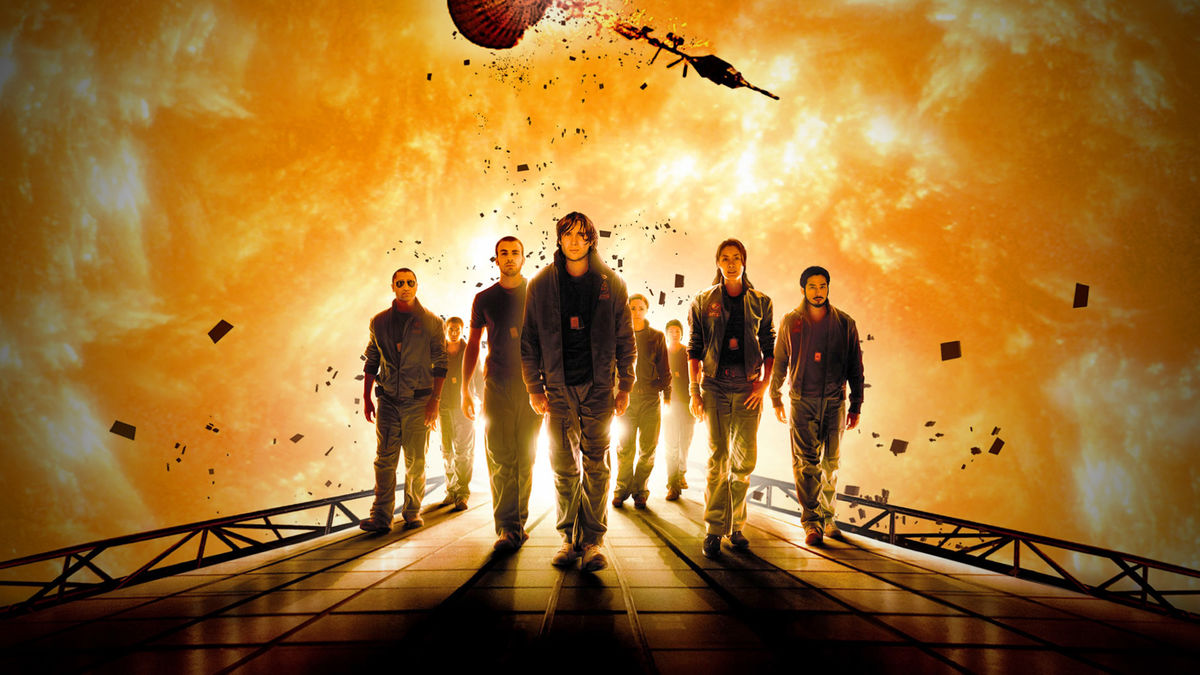
The Sound of Silence and Chaos
Accompanying the visual spectacle is John Murphy’s and Underworld’s hauntingly beautiful score, which amplifies the emotional resonance of the crew’s journey. The soundtrack, particularly tracks like “Adagio in D Minor,” has gained acclaim for its ability to evoke a sense of wonder and dread, enhancing key moments of sacrifice and tension. The use of sound, or the lack thereof, is masterfully employed to underscore the isolation of space and the internal struggles of the characters.
A Reflection on Humanity
At its core, “Sunshine” is a meditation on human resilience, ingenuity, and the instinctual drive to survive and protect. The film poses philosophical questions about the value of individual lives in the face of universal catastrophe, the nature of faith versus science, and the psychological effects of isolation and imminent death. These themes are explored through the crew’s interactions, decisions, and the film’s climax, which veers into existential horror as they confront not only the physical dangers of their mission but also the darker aspects of human nature.
Legacy and Impact
Despite a mixed box office reception, “Sunshine” has garnered a dedicated following and critical reevaluation over the years. It is celebrated for its ambitious storytelling, visual innovation, and the depth of its character study. The film stands as a testament to Boyle’s and Garland’s ability to transcend genre conventions, offering a sci-fi experience that is both intellectually stimulating and emotionally compelling.

“Sunshine” remains a luminous gem in the realm of science fiction, a reminder of the genre’s potential to explore not just the outer reaches of space but also the inner workings of the human soul. Its legacy continues to shine, inspiring discussions and debates about the human condition, the ethics of survival, and the endless quest for knowledge in the face of the unknown.
5. “Lightyear” (2022)
The latest offering from Pixar Animation Studios presents the origin story of Buzz Lightyear, the iconic space ranger character beloved by fans of the “Toy Story” franchise. Directed by Angus MacLane, “Lightyear” seeks to expand the narrative universe of “Toy Story” by focusing on the character who inspired the toy, offering audiences a blend of adventure, nostalgia, and the high-quality animation that Pixar is known for. While some may view it as a conventional origin story, the film distinguishes itself through its visual splendour, character depth, and narrative that provides both straightforward fun and emotional depth.
The Premise
“Lightyear” follows the story of the real Buzz Lightyear, a legendary Space Ranger, who, after being marooned on a hostile planet with his crew, embarks on an intergalactic adventure to find a way back home. The narrative is framed as the movie that Andy, the young boy from “Toy Story,” would have watched to become enamored with the Buzz Lightyear character, thus buying the toy version of him.
Visual and Technical Mastery
Pixar’s reputation for pushing the boundaries of animation is once again upheld in “Lightyear.” The film’s visual aesthetics are a testament to the studio’s dedication to innovation and detail. The animation is not only gorgeous but also meticulously crafted to immerse the viewer in Buzz’s universe, from the expansive cosmic vistas to the intricate designs of alien flora and technology. The use of light, color, and texture brings a tactile reality to the fantastical elements, making “Lightyear” a visual feast that underscores Pixar’s prowess in animation technology.
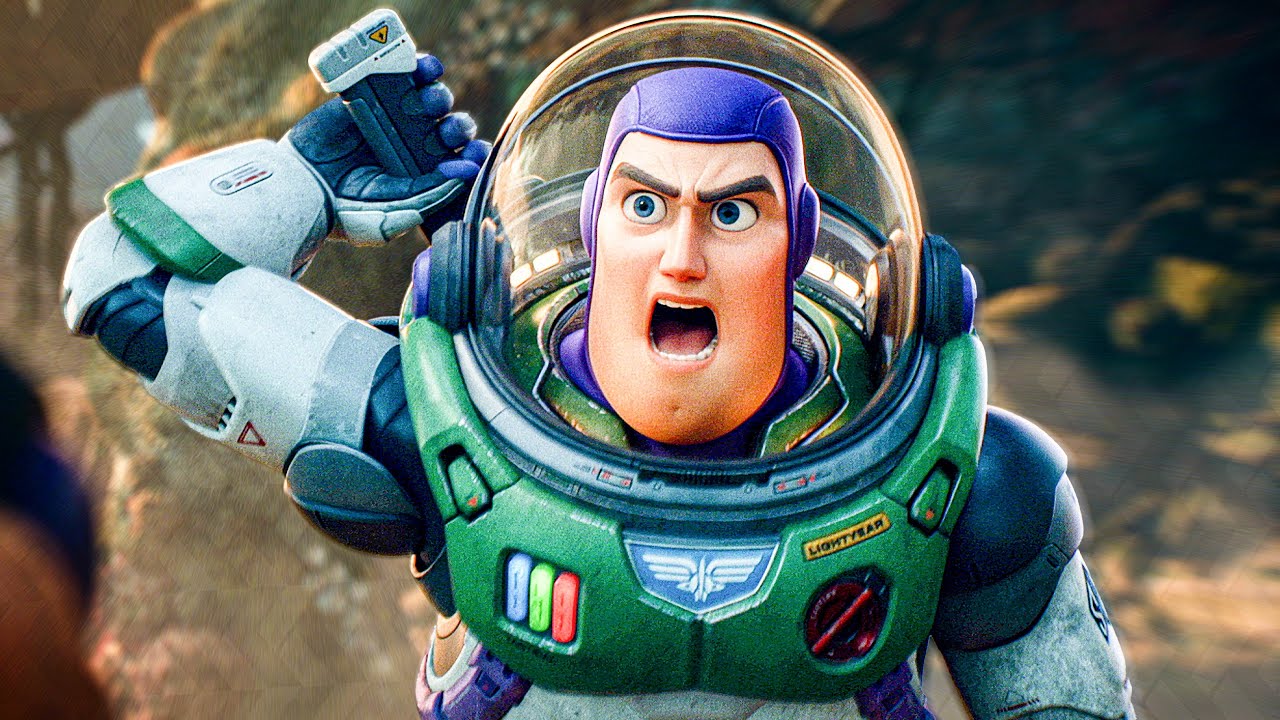
Characterization and Themes
Chris Evans voices Buzz Lightyear, bringing a fresh perspective to the character while honouring the legacy of Tim Allen’s portrayal in the “Toy Story” series. Evans’ Buzz is brave, determined, and driven by a strong sense of duty, yet the film also explores his vulnerabilities, doubts, and the consequences of his decisions. This deeper character study enriches the narrative, providing a more human and relatable hero.
The themes of “Lightyear” echo Pixar’s tradition of embedding meaningful messages within its stories. The film delves into concepts of time, the importance of friendship, and the pursuit of redemption. These themes are woven into the fabric of the adventure, making “Lightyear” not just an action-packed space odyssey but also a contemplative exploration of what it means to be a hero.
Reception and Impact
Though “Lightyear” opened to mixed reviews and discussions about its place within the broader “Toy Story” universe, it has been praised for its animation quality, voice performances, and the emotional depth of its story. The film represents a bold attempt by Pixar to expand its storytelling horizons while staying true to the core values that have made its films resonate with audiences of all ages.

Conclusion
“Lightyear” stands as a beautifully animated, emotionally engaging addition to Pixar’s illustrious filmography. It offers a new perspective on an iconic character, blending nostalgia with a forward-looking narrative that both honours and expands the “Toy Story” legacy. Despite debates over its conventional elements, the film’s visual splendor, character depth, and heartfelt storytelling affirm Pixar’s enduring ability to captivate and inspire.
As an adventure that spans the cosmos, “Lightyear” ultimately delivers a message of hope, perseverance, and the unbreakable bonds of friendship, ensuring its place in the hearts of new and old fans alike.
6. “Gifted” (2017)
Directed by Marc Webb and starring Chris Evans, it is a heartwarming drama that shines a spotlight on familial bonds, intellectual gifts, and the complexities of child prodigies. This film, distinct from Evans’ usual action-packed roles, showcases his versatility as an actor, playing Frank Adler, a single man dedicated to raising his niece, Mary (Mckenna Grace), in a normal, loving environment.
However, Mary is no ordinary child; she is a math prodigy. This fact complicates their lives when Frank’s plans for Mary’s normalcy are challenged by his mother, Evelyn (Lindsay Duncan), who has plans of her own for her granddaughter’s talents.
The Heart of “Gifted”
At its core, “Gifted” is a story about the struggle between doing what is best for a child’s future and allowing them the freedom to live a joyful, balanced life. Frank’s character embodies this struggle as he fights to honor his sister’s wish for Mary to have a chance at a normal childhood despite her extraordinary intelligence.
Chris Evans delivers a nuanced performance, filled with warmth and a deep sense of responsibility, showcasing a different facet of his acting range far removed from his superhero persona.
A Tale of Love, Sacrifice, and Genius
The narrative weaves through themes of sacrifice, love, and the definition of true genius, posing questions about the nature of intellectual gifts and the responsibilities they entail. Mary’s gift for mathematics draws attention from not only her family but also the educational system, setting the stage for a custody battle that tests the bonds of family and the essence of what it means to be truly gifted.
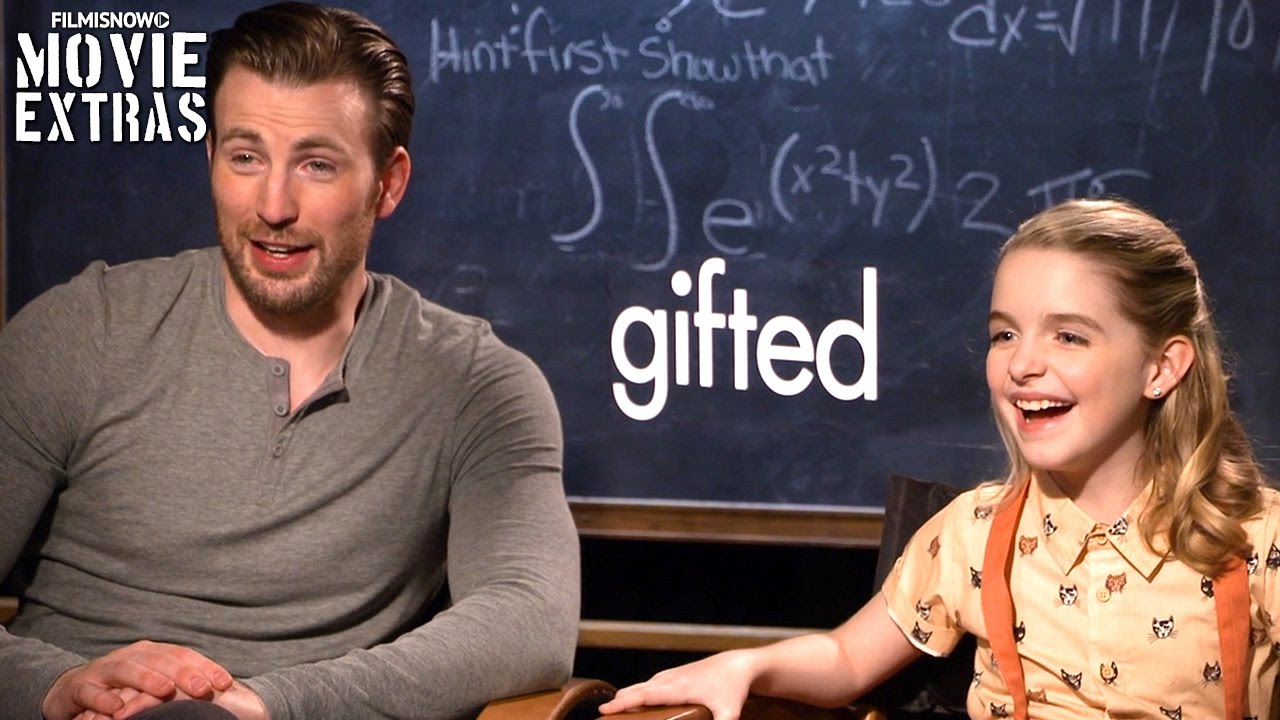
Mckenna Grace’s Breakout Performance
Mckenna Grace’s portrayal of Mary is captivating, bringing to life the character’s brilliance, innocence, and emotional depth. The chemistry between Grace and Evans anchors the film, providing a heartfelt exploration of the uncle-niece relationship. Their interactions are a mix of humor, love, and the everyday challenges of family life, lending authenticity and relatability to the story.
Direction and Cinematography
Marc Webb’s direction in “Gifted” emphasizes the film’s emotional landscape, focusing on character development and the dynamics of family relationships. The cinematography complements this focus, capturing the beauty of ordinary moments and the scenic backdrop of coastal Florida, which serves as the film’s setting.
Critical Reception and Legacy
“Gifted” received positive reviews for its performances, particularly those of Chris Evans and Mckenna Grace, and its handling of sensitive themes. Critics praised the film for not only addressing the complexities of prodigious talent but also for its exploration of what it means to live a meaningful life. While some may find the plot predictable, the film’s charm lies in its execution and the genuine connections between its characters.

In conclusion, “Gifted” stands out in Chris Evans’ filmography as a testament to his ability to engage with more intimate, character-driven stories. The film serves as a reminder of the power of simple, heartfelt storytelling driven by compelling performances and a deep understanding of human relationships.
“Gifted” is not just a movie about a child prodigy but a touching narrative that explores the depths of family, sacrifice, and the true meaning of being gifted.
7. “The Iceman” (2012)
Directed by Ariel Vromen, offers a chilling glimpse into the life of Richard Kuklinski, one of America’s most notorious contract killers, whose career in crime spanned over two decades. The film is based on the true story of Kuklinski, who claimed to have killed over 100 people while keeping his violent profession a secret from his family. Chris Evans takes on a supporting but pivotal role as Robert Pronge, a fellow hitman who becomes both a mentor and an accomplice to Kuklinski, played by Michael Shannon.
A Deep Dive into Darkness
Michael Shannon’s portrayal of Richard Kuklinski is both haunting and complex, presenting a man torn between his love for his family and his cold-blooded nature. “The Iceman” delves deep into Kuklinski’s psyche, exploring the duality of his existence as a devoted family man and a remorseless killer.
The film doesn’t shy away from the brutality of his crimes but also poses questions about nature versus nurture and the circumstances that lead a person down a path of darkness.
Chris Evans: A Chilling Transformation
Chris Evans’ transformation into Robert Pronge is a standout aspect of the film. Known for his roles as charismatic heroes, Evans disappears into the character of Pronge, showcasing his versatility as an actor.
With bleached blond hair and a sinister demeanor, Evans brings a disturbingly casual approach to the role of a hitman, providing a stark contrast to Kuklinski’s more stoic nature. Their partnership on screen adds a layer of depth to the narrative, highlighting the twisted mentorship between Kuklinski and Pronge.
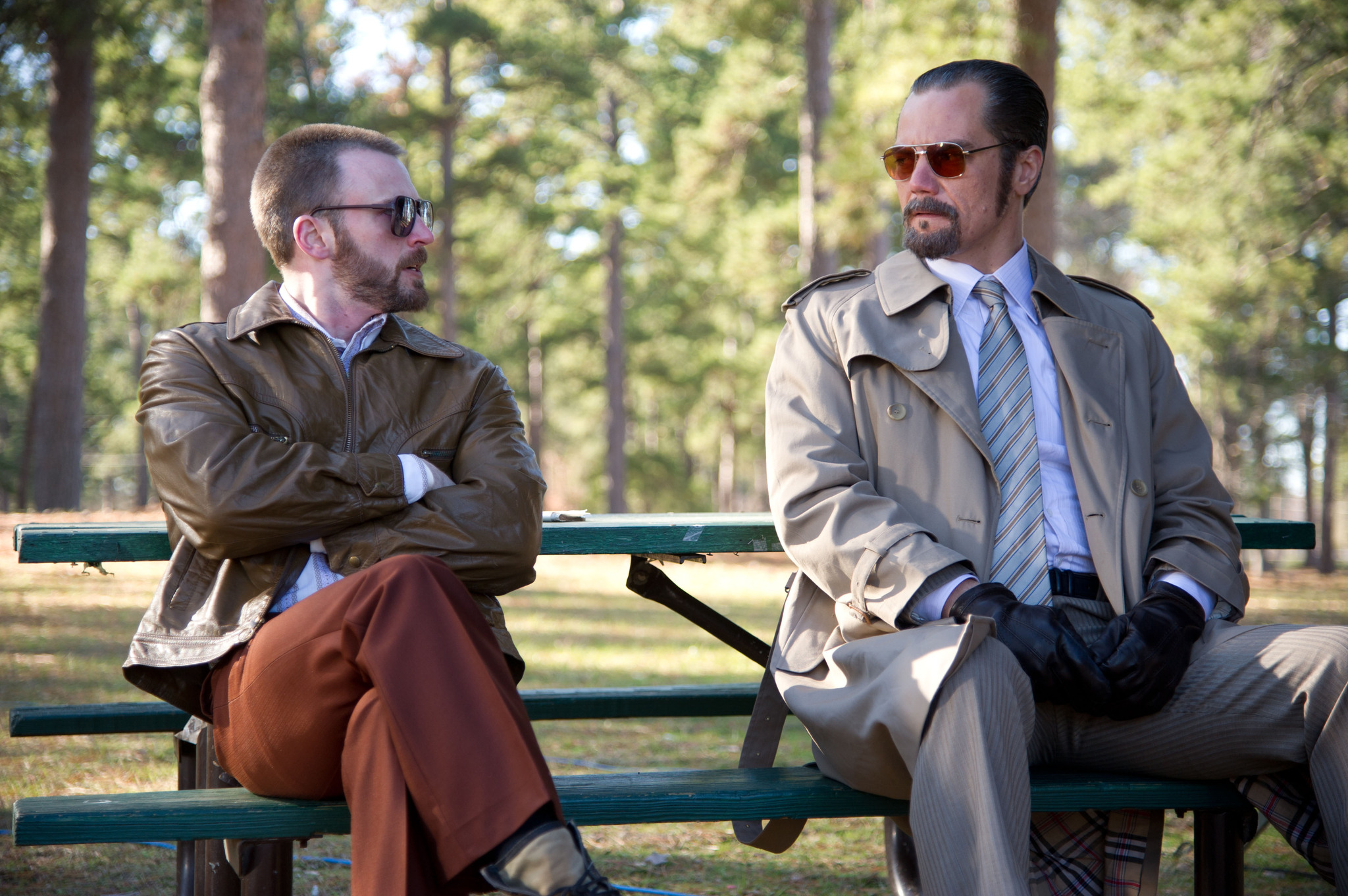
The Moral Ambiguity of a Killer
“The Iceman” excels in its portrayal of the moral ambiguity surrounding Kuklinski’s life. The film invites viewers to grapple with their feelings towards Kuklinski, presenting him as both a villain and a tragic figure shaped by a troubled past. This complexity is a testament to the script’s depth and Shannon’s nuanced performance, supported by a strong ensemble cast that includes Winona Ryder as Kuklinski’s unsuspecting wife, Deborah.
Cinematic Craftsmanship
Ariel Vromen’s direction and the film’s cinematography capture the gritty, tension-filled atmosphere of the 1970s and 1980s, the period during which Kuklinski operated. The use of lighting and colour palette evokes a sense of foreboding, while the pacing keeps the audience on edge, reflecting the unpredictability of Kuklinski’s dual life.
Critical Reception and Impact
Upon its release, “The Iceman” received mixed to positive reviews, with critics praising the performances of Shannon and Evans, as well as the film’s atmospheric tension and psychological depth. While some critics pointed out the film’s conventional approach to storytelling, the consensus was that the performances elevated the material, making it a compelling watch.

Conclusion
“The Iceman” stands as a powerful exploration of one of America’s most enigmatic criminals, driven by standout performances and a keen insight into the human capacity for evil. Chris Evans, in a departure from his heroic roles, offers a memorable portrayal of depravity, further proving his range as an actor.
The film is a somber, unsettling journey into the heart of darkness, leaving a lasting impression on its viewers about the complexities of morality, family, and the hidden depths of the human psyche.
8. Avengers: Age of Ultron
Directed by Joss Whedon, is the second installment in the Avengers series and a pivotal film within the Marvel Cinematic Universe (MCU). Released in 2015, it brings together the iconic ensemble of superheroes to face a new adversary, Ultron, an artificial intelligence gone rogue with intentions to achieve peace through humanity’s extinction.
The Evolution of a Team and Its Heroes
“Age of Ultron” delves into the complexities of heroism, responsibility, and the consequences of power. The film explores the characters’ depths, showcasing their vulnerabilities and fears through the manipulative visions induced by the Scarlet Witch. This narrative choice allows audiences a deeper understanding of the heroes beyond their larger-than-life personas.
For Chris Evans’ Captain America, this means confronting his longing for a past and a simplicity of purpose he can never reclaim, highlighting the timeless nature of his character’s sacrifices.
A Clash of Ideologies
The sequel broadens the philosophical debate about security, freedom, and the moral implications of preemptive defense mechanisms. Tony Stark’s creation of Ultron, intended as a global defense program, backfires spectacularly, setting the stage for internal conflict among the Avengers. This conflict, especially between Stark and Rogers, foreshadows the deeper ideological rift that would fully emerge in “Captain America: Civil War.”
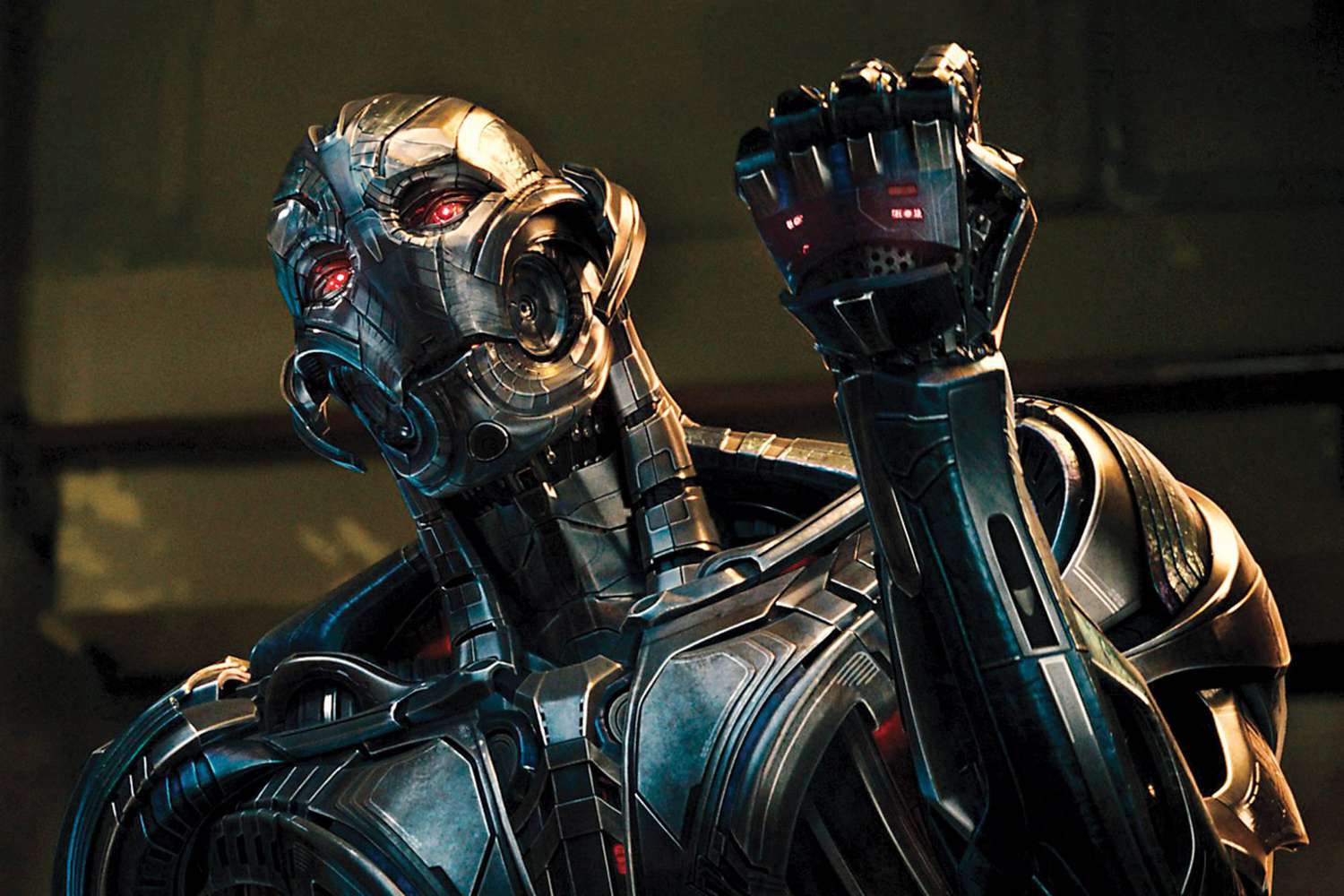
The Introduction of New Heroes
“Age of Ultron” expands the MCU by introducing new characters such as Scarlet Witch (Elizabeth Olsen), Quicksilver (Aaron Taylor-Johnson), and Vision (Paul Bettany). These additions bring fresh dynamics to the team and the story. Vision’s creation, intertwined with the Mind Stone, adds layers to the narrative’s exploration of what it means to be human or a hero.
Visual Spectacle and Action Choreography
The film is celebrated for its visual effects and action sequences, maintaining the high standard expected from Marvel Studios. Notable scenes include the Hulk vs. Iron Man fight in the Hulkbuster armor, the slow-motion ensemble shot during the snowy forest battle, and the climactic battle in Sokovia. These moments combine to create a visually stunning experience that complements the film’s thematic depth.
Reception and Legacy
While “Age of Ultron” faced criticism for its pacing and perceived narrative overcrowding, it was also praised for its character development, action scenes, and visual effects. The film’s ambition to juggle multiple storylines and set up future MCU plotlines was a Herculean task that, for the most part, succeeded in moving the overarching narrative forward.
Chris Evans’ performance as Captain America continues to solidify Steve Rogers as the moral compass of the Avengers, leading with a blend of courage, humility, and an unwavering commitment to his principles. “Age of Ultron” is a crucial chapter in Captain America’s story, setting the stage for his evolution into a leader willing to challenge authority to protect what he believes is right.

In retrospect, “Avengers: Age of Ultron” is an ambitious sequel that, despite its challenges, plays a vital role in the MCU’s narrative tapestry. It deepens the lore, challenges its characters, and sets the stage for the dramatic developments to come, all while providing the action, humor, and heart fans have come to expect from the franchise.
9. “Cellular” (2004)
Cellular is a high-octane thriller that masterfully combines suspense, action, and technology to create a gripping narrative that keeps audiences on the edge of their seats. Directed by David R. Ellis, the film stars Chris Evans in one of his early leading roles, showcasing his potential as a charismatic action star. The movie revolves around a simple yet compelling premise: a kidnapped woman, Jessica Martin (played by Kim Basinger), manages to make a random connection to Ryan (Evans) on his cell phone and pleads for his help.
The Race Against Time
The core of “Cellular” is a relentless race against time, with Ryan thrust into an unexpected hero’s journey. He must use his wits, bravery, and the limited technology available in 2004 to save Jessica and her family from a dangerous kidnapper. The film’s clever use of the then-modern cell phone as a lifeline adds a unique twist to the thriller genre, emphasizing the importance of communication and connection in the digital age.
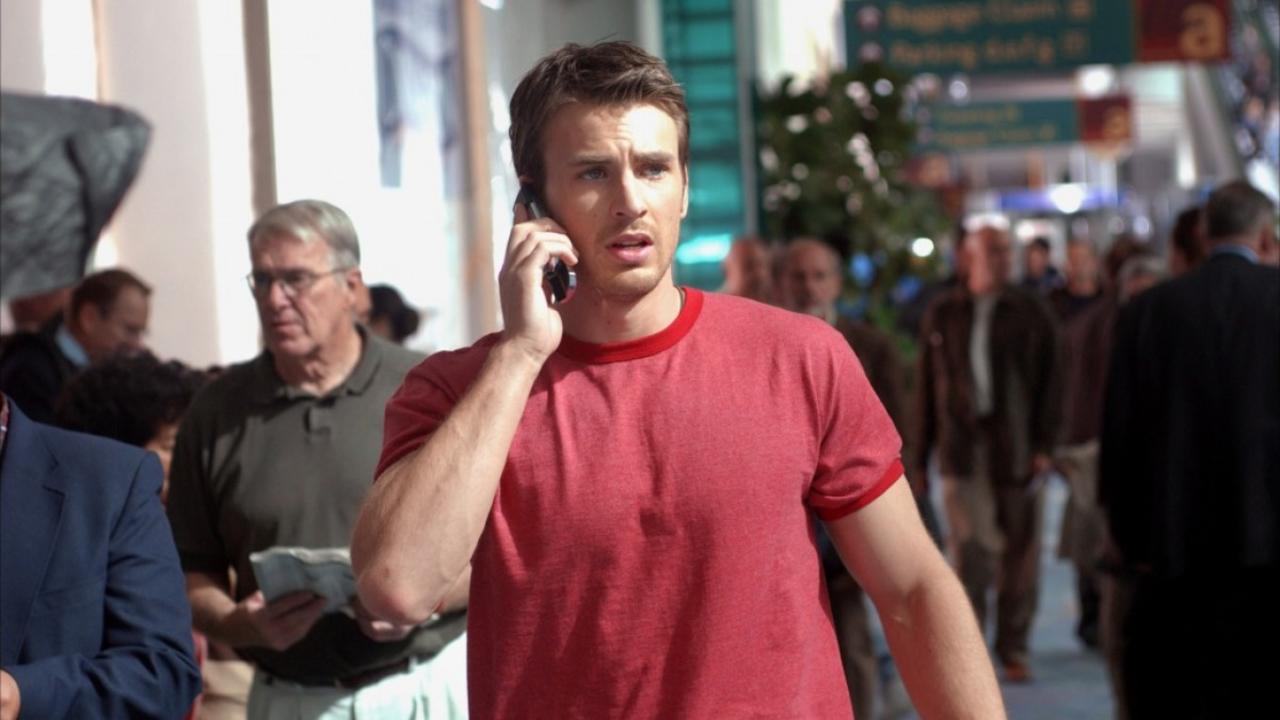
Chris Evans’ Breakthrough
Chris Evans delivers a dynamic performance as Ryan, balancing the intensity of the action-packed sequences with moments of vulnerability and quick-thinking ingenuity. This role highlighted Evans’ ability to carry a film as the lead, blending physical prowess with emotional depth. His portrayal of Ryan’s transformation from an ordinary man into an unlikely hero is both believable and inspiring, offering a glimpse into the star quality that would later define his career.
Supporting Cast and Direction
Kim Basinger’s performance as the desperate yet resourceful Jessica adds depth to the film, creating a palpable sense of urgency that drives the narrative forward. The chemistry between Basinger’s character and Evans through their phone interactions adds an emotional layer to the thriller, making the audience care deeply about their fate.
David R. Ellis’ direction ensures that “Cellular” maintains a brisk pace, with well-choreographed action sequences and clever plot twists that keep viewers guessing. Ellis manages to balance the tension and stakes of the situation with moments of humour and humanity, crafting a thriller that is both entertaining and engaging.
Reception and Legacy
Upon its release, “Cellular” received mixed reviews from critics but was praised for its innovative concept and the performances of its lead actors. The film has since gained a cult following, appreciated for its effective execution of a high-concept thriller and its role in showcasing Chris Evans’ talents before his iconic turn as Captain America in the Marvel Cinematic Universe.

Conclusion
“Cellular” stands out as a thrilling ride that expertly utilizes the tension and possibilities of early mobile technology to create a suspenseful narrative. With Chris Evans’ compelling performance, a strong supporting cast, and David R. Ellis’ adept direction, the film remains a memorable entry in the thriller genre. It’s a testament to the enduring appeal of a well-told story of an ordinary individual thrust into extraordinary circumstances, proving that even the most straightforward concept can lead to a captivating film experience.
10.”Before We Go”
The directorial debut of Chris Evans is a poignant and introspective romantic film that explores the unexpected connection between two strangers over the course of one night in New York City. Released in 2014, the film stars Evans himself alongside Alice Eve, who plays Nick and Brooke, respectively. Unlike many of its genre contemporaries, “Before We Go” opts for a more intimate and realistic portrayal of romance, relying on the strength of its lead performances and the chemistry between its characters to drive the narrative.
A Night of Unexpected Connections
The film unfolds throughout a single night, beginning when Brooke misses her last train out of New York City. She meets Nick, a street musician playing in Grand Central Terminal. What starts as a chance encounter quickly evolves into a night filled with adventure, self-discovery, and introspection as they help each other confront their pasts, present, and potential futures.
The Directorial Touch of Chris Evans
As his first foray into directing, Chris Evans demonstrates a keen eye for the subtleties of human interaction and the complexities of relationships. “Before We Go” is notable for its departure from the traditional romantic comedy formula; there are no grand gestures or over-the-top declarations of love.
Instead, Evans focuses on the quiet moments between Nick and Brooke, allowing their conversation and shared experiences to naturally develop their relationship. This stripped-down approach not only showcases Evans’ capabilities as a director but also as an actor capable of conveying deep emotional nuance.
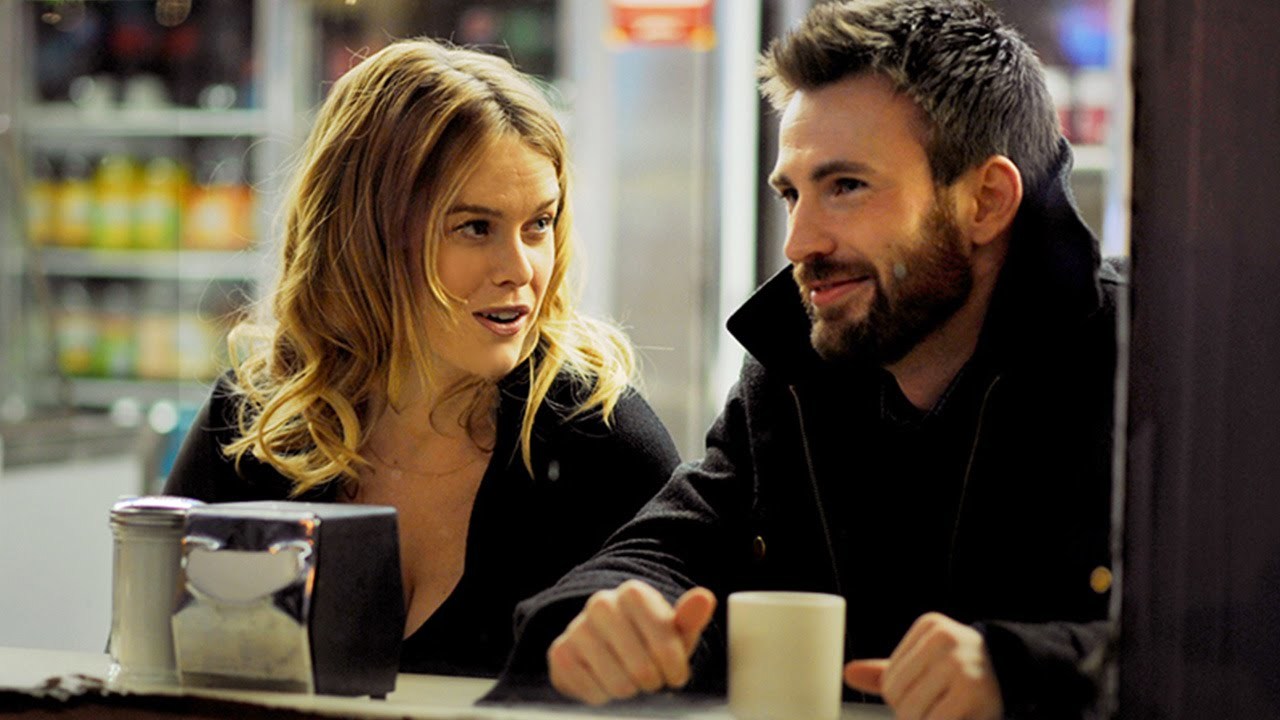
Chemistry That Captivates
The film’s success hinges on the undeniable chemistry between Chris Evans and Alice Eve. Their performances breathe life into their characters, making Nick and Brooke’s growing connection feel both genuine and deeply relatable. The dialogue, which ranges from playful banter to heartfelt confessions, feels authentic, mirroring the unpredictability and complexity of real-life interactions. This authenticity is a testament to both the actors’ skills and the direction that encourages a naturalistic portrayal of emotion and vulnerability.
Themes of Regret and Redemption
“Before We Go” delves into themes of regret, missed opportunities, and the search for redemption. Both Nick and Brooke are at a crossroads in their lives, grappling with decisions that could alter their futures. Their journey through the night serves as a metaphor for the possibility of change and the hope that it’s never too late to redirect the course of one’s life. The film thoughtfully explores how strangers can profoundly impact each other’s lives, often in unexpected ways.
Reception and Legacy
While “Before We Go” received mixed reviews from critics, it found a dedicated audience appreciative of its heartfelt storytelling and the strong performances of its leads. The film stands out as a reflective and understated romance that prioritizes character development over plot contrivances.

In conclusion, “Before We Go” marks a promising directorial debut for Chris Evans, showcasing his ability to craft a story that resonates on a deeply human level. It’s a film that celebrates the beauty of chance encounters and the transformative power of connection, making it a memorable addition to the romantic genre.
Conclusion
The top 10 movies of Chris Evans not only highlight his journey through Hollywood but also underline the versatility and depth he brings to each role. From the patriotic fervour of Captain America in the Marvel Cinematic Universe to the nuanced portrayals in films like “Gifted” and “Snowpiercer,” Evans demonstrates an impressive range that transcends genre boundaries.
These films have not only entertained millions around the globe but also cemented Evans’ status as a multifaceted actor capable of drawing audiences into the very heart of his characters.
His career, marked by both blockbuster successes and critical acclaim, showcases a commitment to storytelling and a willingness to explore complex characters and themes. As Evans continues to evolve and select diverse projects, his top films serve as milestones in a continually unfolding narrative of artistic growth and audience connection.


